Home>Storage Ideas>Kitchen Storage>Kitchen Flooring Ideas: 22 Stylish, Practical Kitchen Floors
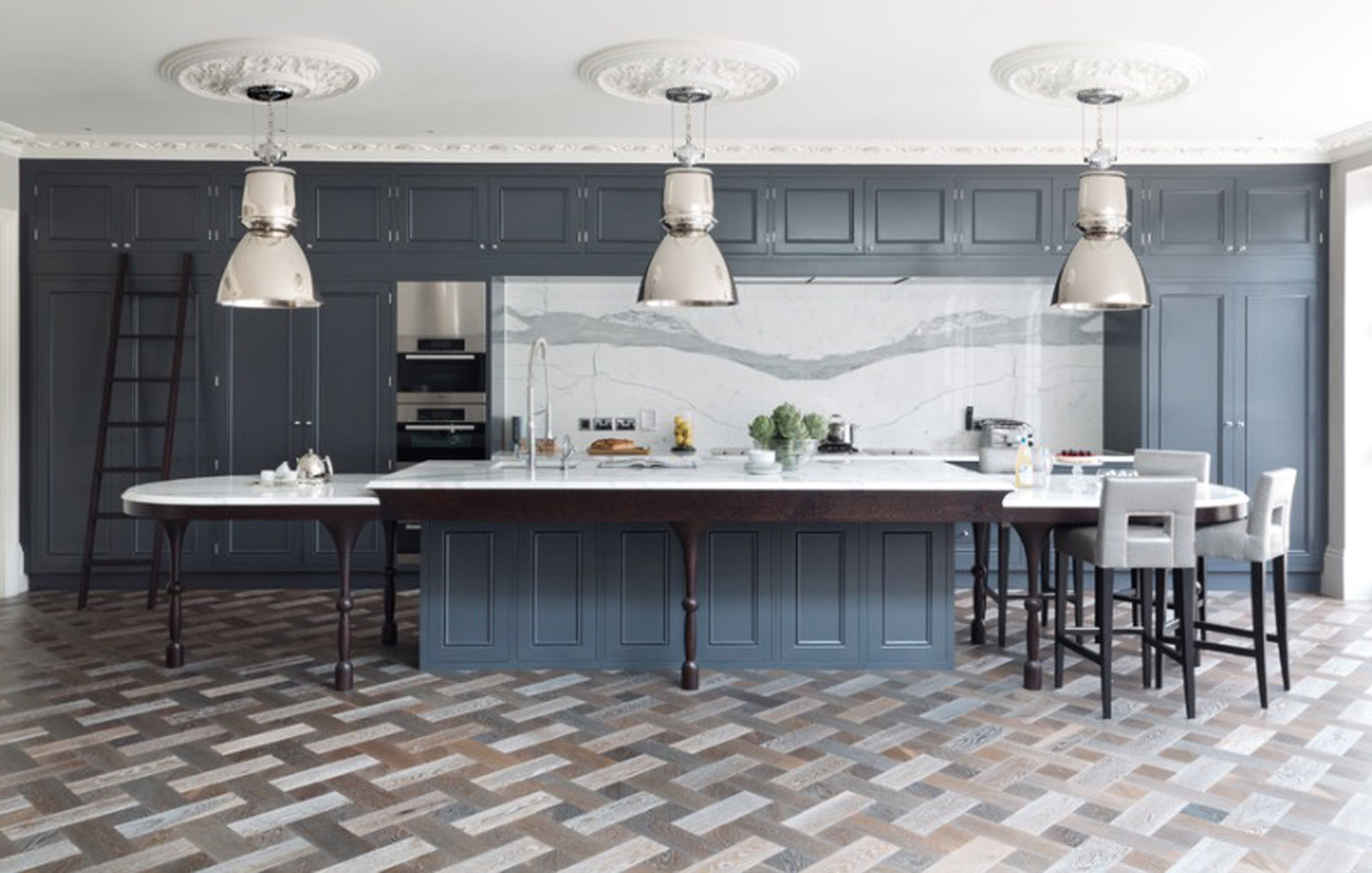

Kitchen Storage
Kitchen Flooring Ideas: 22 Stylish, Practical Kitchen Floors
Modified: February 3, 2024
Discover 22 stylish and practical kitchen flooring ideas that will transform your space. From hardwood to tile, find the perfect kitchen floor at [website].
(Many of the links in this article redirect to a specific reviewed product. Your purchase of these products through affiliate links helps to generate commission for Storables.com, at no extra cost. Learn more)
Hardwood Flooring
Hardwood flooring is a classic and timeless option for kitchen floors. With its warm and inviting look, hardwood adds a touch of elegance and sophistication to any kitchen. It also offers durability and longevity, making it a popular choice among homeowners.
One of the advantages of hardwood flooring is its versatility. There are various types of hardwood to choose from, including oak, maple, cherry, and walnut, each with its unique grain pattern and color. This allows you to select a hardwood that complements your kitchen’s overall aesthetic.
Hardwood flooring is also known for its durability. With proper care and maintenance, hardwood floors can last for decades, withstanding heavy foot traffic and daily wear and tear. However, it is important to note that hardwood is susceptible to scratches and can be damaged by water if not properly sealed.
When it comes to cleaning hardwood floors, it is recommended to sweep or vacuum regularly to remove dirt and debris. Spills should be wiped up promptly to prevent staining. Additionally, it is important to avoid using harsh chemicals or abrasive materials when cleaning hardwood floors, as they can cause damage.
Another advantage of hardwood flooring is its ability to be refinished. Over time, hardwood floors may show signs of wear, such as scratches or dents. However, with refinishing, the surface can be sanded down and a new finish applied, restoring the floor’s original beauty.
In terms of cost, hardwood flooring can be more expensive compared to other options. However, considering its longevity and timeless appeal, it can be a worthwhile investment that adds value to your home.
Overall, hardwood flooring is a popular choice for kitchens due to its classic beauty, durability, and ability to be refinished. It adds warmth and character to the space, making it a timeless and stylish option.
Key Takeaways:
- 1. Durable and Stylish: From classic hardwood to modern glass, the wide range of kitchen flooring options offers durability, style, and customization to transform any kitchen into a stunning and functional space.
- 2. Eco-Friendly and Unique: Sustainable choices like reclaimed wood and bamboo flooring provide environmentally conscious homeowners with the opportunity to add character and history to their kitchens while reducing their environmental impact.
Laminate Flooring
Laminate flooring is a cost-effective and versatile option for kitchen floors. It simulates the look of hardwood, stone, or tile, but at a fraction of the cost. With its wide range of styles and designs, laminate flooring offers endless possibilities for creating a beautiful and practical kitchen space.
One of the main advantages of laminate flooring is its durability. It is resistant to scratches, stains, and fading, making it suitable for high-traffic areas like kitchens. Laminate is also moisture-resistant, which is an important feature for a room prone to spills and moisture.
Installation of laminate flooring is relatively easy, thanks to its click-lock system. The planks or tiles can be installed directly over an existing subfloor or even on top of existing flooring, such as vinyl or tile, making it a convenient option for kitchen renovations.
Maintenance of laminate flooring is simple. Regular sweeping or vacuuming, along with occasional damp mopping, should suffice to keep the floors clean. However, it is important to avoid excessive water or liquid on laminate floors, as it can seep into the seams and cause damage.
Laminate flooring also offers a wide variety of styles and designs. Whether you prefer the look of hardwood, tile, or stone, there is a laminate option to suit your taste. Additionally, modern laminate flooring can replicate the texture and feel of natural materials, adding to its appeal.
One of the drawbacks of laminate flooring is that it cannot be refinished. Unlike hardwood, laminate cannot be sanded down and recoated. If the surface of the laminate is damaged, the affected planks or tiles would need to be replaced.
In terms of cost, laminate flooring is an affordable option compared to hardwood or tile. It provides a budget-friendly alternative while still offering the appearance of more expensive materials.
Overall, laminate flooring is a practical and cost-effective choice for kitchen floors. With its durability, easy installation, and wide range of styles, laminate can transform your kitchen into a stylish and functional space.
Ceramic Tile Flooring
Ceramic tile flooring is a popular choice for kitchens due to its durability, versatility, and aesthetic appeal. With its wide range of colors, patterns, and finishes, ceramic tiles can complement any kitchen style, from modern to traditional.
One of the main advantages of ceramic tile flooring is its durability. Ceramic tiles are scratch-resistant and can withstand high foot traffic, making them suitable for busy kitchen areas. They are also heat-resistant, which is important for a room where cooking and hot pans are common.
In addition to being durable, ceramic tiles are also water-resistant. They do not absorb moisture, which helps prevent the growth of mold and mildew. This makes ceramic tile flooring an ideal choice for kitchens where water spills and high humidity levels are common.
Cleaning and maintenance of ceramic tile flooring are relatively easy. Regular sweeping or vacuuming, along with occasional mopping with a mild cleanser, is usually sufficient to keep the tiles clean and looking their best. However, it is important to note that the grout lines between the tiles may require more frequent cleaning.
One of the greatest advantages of ceramic tile flooring is the wide range of design options. From subway tiles to mosaic patterns, ceramic tiles offer endless possibilities for creating a unique and personalized kitchen space. Additionally, tiles can be arranged in different layouts, such as herringbone or diagonal, to add visual interest.
When it comes to cost, ceramic tile flooring can vary depending on the type of tile, size, and design. However, it is generally more affordable compared to other options like natural stone. It offers a great balance between quality and cost-effectiveness.
One consideration to keep in mind with ceramic tile flooring is that it can be cold underfoot. This can be mitigated by using area rugs or installing radiant floor heating systems to provide warmth during colder months.
Overall, ceramic tile flooring offers durability, water-resistance, and a wide range of design options, making it a reliable and stylish choice for kitchen floors. With proper care and maintenance, ceramic tile flooring can last for many years while adding value and beauty to your kitchen space.
Vinyl Flooring
Vinyl flooring is a versatile, affordable, and practical option for kitchen floors. It has come a long way from its early days and is now available in a wide range of styles, colors, and patterns, allowing you to achieve the look you desire for your kitchen.
One of the main advantages of vinyl flooring is its durability. It is resistant to scratches, stains, and moisture, making it a suitable choice for kitchens that experience heavy foot traffic and frequent spills. Vinyl floors are also known for their resilience, as they can bounce back from impacts, reducing the chance of permanent dents or damage.
Another benefit of vinyl flooring is its easy maintenance. Regular sweeping or vacuuming, along with occasional damp mopping, is usually all that is needed to keep the floors clean. Vinyl is also resistant to stains, so even stubborn spills can often be wiped away with ease.
Vinyl flooring is available in different formats, including vinyl sheets, vinyl tiles, and luxury vinyl planks (LVP). Vinyl sheets are seamless and can be a great option for larger kitchen spaces, while vinyl tiles and LVP can mimic the look of natural materials like hardwood or stone.
Installation of vinyl flooring is relatively straightforward, and it can often be done as a DIY project. Vinyl sheets can be cut to fit the dimensions of your kitchen and glued or adhered to the subfloor. Vinyl tiles and LVP usually feature a click-lock system, allowing for easy installation without the need for adhesives.
In terms of cost, vinyl flooring is generally more affordable compared to other options like hardwood or ceramic tile. It provides a budget-friendly alternative while still offering the appearance of more expensive materials.
While vinyl flooring offers many benefits, it is important to note that it can be susceptible to fading and can be damaged by extreme heat or sharp objects. Additionally, while modern vinyl flooring has become more durable, it may not have the same longevity or feel as natural materials.
Overall, vinyl flooring is a versatile and practical choice for kitchen floors. With its wide range of styles, easy maintenance, and affordability, vinyl can provide a durable and attractive flooring solution for your kitchen.
Bamboo Flooring
Bamboo flooring is a sustainable and environmentally friendly option for kitchen floors. It offers a unique and stylish look, as well as several advantages that make it a popular choice among homeowners.
One of the main advantages of bamboo flooring is its eco-friendliness. Bamboo is a highly renewable resource that grows much faster than traditional hardwood trees. It can be harvested in just a few years, making it a sustainable alternative to other flooring materials.
Bamboo flooring is also known for its durability. It is harder than many hardwood species, which makes it resistant to scratches, dents, and wear. This makes it an excellent choice for high-traffic areas like kitchens, where heavy foot traffic and dropped utensils are common.
In addition to its durability, bamboo flooring offers a unique and natural aesthetic. It has a distinctive grain pattern that adds character and warmth to any kitchen space. It is available in a variety of colors, ranging from light blonde to deeper amber, allowing you to select a shade that complements your kitchen’s style and decor.
Maintenance of bamboo flooring is relatively easy. Regular sweeping or vacuuming, along with occasional mopping using a damp cloth or mop, is usually sufficient to keep the floors clean. It is important to note that bamboo floors should not be soaked or exposed to excessive moisture, as this can cause them to warp or damage the finish.
When it comes to cost, bamboo flooring can vary depending on the type and quality of the bamboo used. It is generally more affordable compared to high-end hardwood flooring options, making it a budget-friendly choice for homeowners.
One consideration with bamboo flooring is that it can be susceptible to water damage if not properly sealed. It is important to choose a bamboo flooring option that is specifically designed for high-moisture areas like kitchens and to ensure proper installation and sealing to protect against water damage.
Overall, bamboo flooring offers a sustainable and stylish option for kitchen floors. With its durability, unique aesthetic, and eco-friendliness, bamboo flooring can add a touch of natural beauty to your kitchen while contributing to a more sustainable living environment.
Cork Flooring
Cork flooring is a unique and eco-friendly option for kitchen floors that offers a range of benefits. Made from the bark of the cork oak tree, it is a renewable and sustainable material that provides a warm and inviting look to any kitchen space.
One of the main advantages of cork flooring is its comfortable and soft underfoot feel. It has natural shock-absorbing properties, making it a comfortable surface to stand on for extended periods. This makes it an ideal choice for those who spend a lot of time in the kitchen, cooking or hosting gatherings.
Cork flooring is also known for its natural insulation properties. It helps to keep the room warm in colder months and cool in warmer months, which can contribute to energy savings and a comfortable living environment.
In addition to its comfort and insulation, cork flooring is highly durable and resistant to scratches and dents. This makes it suitable for high-traffic areas, such as kitchens, where accidents and spills are common.
Maintenance of cork flooring is relatively easy. Regular sweeping or vacuuming, along with occasional damp mopping using a mild cleanser, is generally sufficient to keep the floors clean. It is important to note that cork is a natural material and can be sensitive to water, so it is essential to wipe up spills promptly and avoid excessive moisture.
Cork flooring also offers a natural and unique aesthetic. It has a warm and earthy appearance that adds character and visual interest to any kitchen. It is available in a variety of colors and patterns, allowing you to choose the style that suits your kitchen decor.
When it comes to cost, cork flooring can be a slightly more expensive option compared to other materials like vinyl or laminate. However, considering its durability, comfort, and eco-friendliness, many homeowners find it to be a worthwhile investment.
One consideration with cork flooring is its vulnerability to fading when exposed to direct sunlight over time. It is recommended to use window coverings or UV-protective coatings to minimize the impact of sunlight on the cork surface.
Overall, cork flooring offers a unique combination of comfort, durability, and sustainability, making it a standout choice for kitchen floors. With its natural beauty and eco-friendly properties, cork flooring can create a warm and inviting atmosphere in your kitchen space.
Concrete Flooring
Concrete flooring is a modern and industrial-style option for kitchen floors that has gained popularity for its durability and versatility. Although typically associated with commercial spaces, concrete flooring has become a sought-after choice for residential kitchens due to its unique aesthetic and ability to be customized.
One of the main advantages of concrete flooring is its exceptional durability and longevity. Concrete is resistant to scratches, stains, and moisture, making it a suitable option for high-traffic areas like kitchens. With proper maintenance, concrete floors can last for decades, making it a cost-effective choice.
In recent years, concrete flooring has evolved to offer a variety of finishes and styles. From a polished and sleek look to a textured and rustic appearance, concrete can be customized to match your design preferences. It can also be stained, stamped, or etched to create unique patterns and designs, making it a highly versatile flooring material.
Maintenance of concrete flooring is relatively simple. Regular sweeping or vacuuming, along with occasional damp mopping using a mild cleanser, is generally sufficient to keep the floors clean. It is important to note that concrete floors should be sealed to protect against staining and moisture penetration, especially in a kitchen where spills are common.
Another advantage of concrete flooring is its ability to retain and radiate heat. When combined with radiant floor heating systems, concrete floors can provide efficient and consistent warmth, making them ideal for colder climates.
When it comes to cost, concrete flooring can vary depending on the customization options and finishes chosen. It may require professional installation, which can add to the overall cost. However, considering its durability and longevity, many homeowners consider it a worthwhile investment.
One consideration with concrete flooring is that it can be hard underfoot, which may not be comfortable for some individuals, especially if they spend a lot of time standing in the kitchen. However, rugs and mats can be added to provide cushioning and enhance comfort.
Overall, concrete flooring offers a contemporary and industrial-style option for kitchen floors. With its durability, versatility, and customization possibilities, concrete flooring can create a chic and modern look in your kitchen space while providing long-lasting performance.
Linoleum Flooring
Linoleum flooring is a durable and eco-friendly option for kitchen floors that has been used for decades. It offers several advantages, including its sustainability, versatility, and easy maintenance.
One of the main advantages of linoleum flooring is its environmentally friendly nature. Made from renewable materials such as linseed oil, cork powder, and wood flour, linoleum is a natural and biodegradable flooring option. It is free from harmful chemicals and is considered a greener alternative to vinyl flooring.
Linoleum flooring is also known for its durability. It is resistant to scratches, stains, and wear, making it suitable for high-traffic areas like kitchens. Linoleum has inherent antimicrobial properties, which helps inhibit the growth of bacteria, making it a hygienic choice for kitchen floors.
In terms of design, linoleum offers a wide variety of colors, patterns, and finishes. From vibrant and bold colors to subtle and timeless designs, linoleum can complement any kitchen style. It can even mimic the look of other materials like hardwood or stone, giving you the flexibility to achieve the desired aesthetic for your kitchen.
Maintenance of linoleum flooring is relatively simple. Regular sweeping or vacuuming, along with occasional damp mopping using a mild cleanser, is typically all that is needed to keep the floors clean. Linoleum is water-resistant but not waterproof, so it is important to quickly wipe up any spills to prevent potential damage.
Another advantage of linoleum flooring is its affordability. It is generally more cost-effective compared to other flooring options like hardwood or ceramic tile. This makes it a popular choice for budget-conscious homeowners who still want a durable and visually appealing flooring solution.
While linoleum is a durable option, it can be susceptible to fading over time with prolonged exposure to direct sunlight. It is recommended to use window coverings to protect the floors from excessive UV rays.
Overall, linoleum flooring offers a sustainable, durable, and stylish option for kitchen floors. With its wide range of designs and ease of maintenance, linoleum can enhance the visual appeal of your kitchen while providing a comfortable and long-lasting flooring option.
Brick Flooring
Brick flooring is a unique and charming option for kitchen floors that brings a rustic and timeless appeal to any space. With its durability and distinctive aesthetic, brick flooring can add warmth and character to your kitchen.
One of the main advantages of brick flooring is its durability. Brick is a strong material that can withstand heavy foot traffic and is highly resistant to wear and tear. It is known for its long lifespan, making it a durable choice for kitchen floors.
Brick flooring is also highly versatile, as it can be laid in various patterns and arrangements. Whether you prefer a traditional running bond pattern or a herringbone design, brick allows for endless customization options to suit your kitchen’s style.
In addition to its durability and versatility, brick flooring is naturally insulating. It retains heat, helping to keep your kitchen warm and cozy. It is also a good conductor of radiant heat, making it compatible with underfloor heating systems for added comfort during colder months.
Cleaning and maintenance of brick flooring are relatively straightforward. Regular sweeping or vacuuming, along with occasional mopping using a mild cleaner, is usually sufficient to keep the surface clean. It is important to seal the brick to protect it from stains and moisture penetration, especially in a kitchen where spills are common.
One of the distinctive features of brick flooring is its timeless and rustic aesthetic. It adds a sense of warmth and charm to any kitchen, enhancing the overall ambiance. The color variations and textures of brick create a unique and visually appealing surface that can complement different kitchen styles, from traditional to industrial.
When it comes to cost, brick flooring can vary depending on factors such as the type of brick used, installation method, and any additional treatments or finishes. While it may require professional installation, brick flooring has a long lifespan and can add value to your home, making it a worthwhile investment for many homeowners.
It is important to note that brick flooring can be harder underfoot compared to softer materials. However, area rugs or mats can be used to provide cushioning and alleviate any discomfort.
Overall, brick flooring offers a unique and durable choice for kitchen floors. With its timeless appeal, versatility, and easy maintenance, brick can create a charming and inviting atmosphere in your kitchen, adding a touch of character and style.
Stone Flooring
Stone flooring is a luxurious and elegant option for kitchen floors that exudes natural beauty and timeless appeal. With its durability, versatility, and wide range of options, stone flooring can add a touch of sophistication to any kitchen space.
One of the main advantages of stone flooring is its exceptional durability. Natural stones like granite, marble, limestone, and slate are incredibly strong and can withstand heavy foot traffic, making them ideal for high-traffic areas like kitchens. Stone floors are resistant to scratches, stains, and moisture, ensuring they can stand the test of time.
Stone flooring also offers a wide variety of choices in terms of colors, patterns, and finishes. Each type of stone has its own unique characteristics, from the bold veining of marble to the earthy texture of slate. This variety allows you to create a truly customized look that reflects your personal style and complements your kitchen design.
In addition to its durability and versatility, stone flooring has excellent heat distribution properties. It can absorb and store heat, making it compatible with radiant floor heating systems. This feature ensures a warm and comfortable kitchen space, especially during colder months.
Maintenance of stone flooring varies depending on the type of stone. Generally, sweeping or vacuuming followed by mopping with a mild cleanser is sufficient to keep the floors clean. However, it is essential to use specific stone cleaners and avoid using acidic or abrasive materials that can damage the stone’s surface.
One of the standout features of stone flooring is its natural beauty. The varying colors, veining, and textures of different stones create a visually stunning and unique surface. Stone floors can transform a kitchen into an elegant and luxurious space, elevating its overall aesthetic.
When it comes to cost, stone flooring can vary greatly depending on the type of stone chosen and its quality. Generally, natural stones tend to be more expensive than other flooring options. It is important to consider the long-term investment value and the timeless beauty that stone flooring brings to your kitchen.
While stone flooring offers many benefits, it is important to note that it can be more susceptible to damage from acidic substances and may require periodic resealing. Additionally, some stones can be more porous and may require more extensive maintenance to prevent staining.
Overall, stone flooring offers a luxurious and durable option for kitchen floors. With its natural beauty, durability, and timeless appeal, stone flooring can transform your kitchen into a stunning and sophisticated space that stands the test of time.
Rubber Flooring
Rubber flooring is a practical and versatile option for kitchen floors that offers a range of advantages. With its durability, comfort, and resilience, rubber flooring can provide a safe and functional surface for any kitchen space.
One of the main advantages of rubber flooring is its exceptional durability. Rubber is a resilient and long-lasting material that can withstand heavy foot traffic, making it a suitable choice for busy kitchens. It is resistant to scratches, dents, and stains, ensuring its longevity even in high-traffic areas.
Rubber flooring also offers excellent slip resistance, which is crucial in a kitchen where spills and wet surfaces are common. With its inherent anti-slip properties, rubber flooring provides a safe and secure surface, reducing the risk of accidents and falls.
In addition to its durability and slip resistance, rubber flooring is known for its comfort. It has natural cushioning properties that provide a soft and comfortable feel underfoot. This makes it a popular choice for kitchens where individuals may spend long periods standing, such as home chefs or those who enjoy hosting gatherings.
Maintenance of rubber flooring is relatively easy. Regular sweeping or vacuuming, along with occasional mopping using mild soap and water or a specified rubber floor cleaner, is typically sufficient to keep the floors clean. Rubber flooring is resistant to moisture and staining, which adds to its convenience and ease of maintenance.
One of the unique features of rubber flooring is its versatility in terms of design. It is available in a variety of colors and textures, allowing you to create a personalized and visually appealing look for your kitchen. Rubber flooring can be found in solid colors, speckled designs, and even patterns that mimic other materials like wood or stone.
When it comes to cost, rubber flooring can vary depending on factors such as thickness, quality, and design. It is generally a mid-range option in terms of cost, providing a balance between affordability and durability.
While rubber flooring offers many benefits, it is important to note that it can be prone to fading and discoloration when exposed to sunlight over time. It is recommended to use window coverings to minimize direct sunlight on the floor surface.
Overall, rubber flooring offers a practical and comfortable choice for kitchen floors. With its durability, slip resistance, and versatility in design, rubber flooring can provide a safe and functional surface that enhances the overall functionality and aesthetics of your kitchen.
Consider using durable and easy-to-clean materials like porcelain tile, luxury vinyl, or laminate for your kitchen flooring. These options are not only stylish but also practical for the high-traffic and spill-prone nature of the kitchen.
Marble Flooring
Marble flooring is a luxurious and elegant option for kitchen floors that exudes timeless beauty and sophistication. With its natural veining and unique patterns, marble flooring can elevate the aesthetics of any kitchen and create a striking focal point.
One of the main advantages of marble flooring is its stunning visual appeal. The natural colors and intricate veining patterns of marble create a truly unique and luxurious look. Marble comes in a variety of shades, from classic white to soft neutrals and vibrant hues, allowing you to select the perfect color to complement your kitchen’s style.
In addition to its beauty, marble is a durable and long-lasting material. It is known for its hardness and resistance to scratches and impact, making it suitable for high-traffic areas like kitchens. With proper care and maintenance, marble floors can retain their beauty for decades.
One of the standout features of marble flooring is its ability to reflect light, creating an airy and spacious feel in the kitchen. This natural luminosity adds a touch of elegance and warmth to the space, making it a popular choice among homeowners.
Maintenance of marble flooring is relatively simple. Regular sweeping or vacuuming, along with occasional mopping using a mild cleanser or a specified marble cleaner, is usually sufficient to keep the floors clean and free from debris. It is important to note that marble is susceptible to staining and etching from acidic substances, so it is recommended to quickly wipe up spills and avoid using harsh chemicals.
While marble is a durable material, it is important to note that it can be more prone to scratching and etching compared to other flooring options. Additionally, marble is a porous material, and if not properly sealed, it can be susceptible to moisture damage. Regular sealing is essential to protect the stone and maintain its longevity.
When it comes to cost, marble flooring is generally considered a higher-end option. It is more expensive compared to materials like laminate or vinyl. However, considering its timeless beauty and the value it adds to a home, many homeowners feel that marble flooring is a worthwhile investment.
Overall, marble flooring offers a luxurious and visually stunning choice for kitchen floors. With its natural beauty, durability, and ability to enhance the overall aesthetics of a space, marble flooring can transform your kitchen into an elegant and sophisticated haven.
Terrazzo Flooring
Terrazzo flooring is a unique and visually striking option for kitchen floors that combines durability with artistic elegance. With its distinctive appearance and versatility, terrazzo flooring can add a touch of sophistication and character to any kitchen space.
One of the main advantages of terrazzo flooring is its exceptional durability. Made by mixing marble, glass, and other aggregates with a binder, terrazzo is a strong and resilient material that can withstand heavy foot traffic and daily wear and tear. It is resistant to scratches, stains, and moisture, making it an ideal choice for kitchens.
Terrazzo flooring offers a wide range of design possibilities. The combination of different colored aggregates and binders allows for endless customization options. From bold and vibrant patterns to subtle and understated designs, terrazzo can be tailored to suit any kitchen style and aesthetic preference.
In addition to its beauty and durability, terrazzo flooring is highly resistant to stains and requires minimal maintenance. Regular sweeping or vacuuming, along with occasional mopping using a pH-neutral cleaner, is usually all that is needed to keep the floors clean and looking their best. Terrazzo is also a non-porous material, making it resistant to bacteria and mold growth.
Another advantage of terrazzo flooring is its longevity. When properly installed and maintained, terrazzo floors can last for decades, making it a cost-effective investment in the long run. Additionally, if the surface of the terrazzo becomes worn or dull over time, it can be restored through polishing and refinishing.
When it comes to cost, terrazzo flooring can vary in price depending on the type of aggregates used, complexity of the design, and the size of the area to be covered. While it may be more expensive than certain types of flooring materials, the durability and timeless beauty of terrazzo make it a valued addition to any kitchen.
It is important to note that terrazzo flooring can be more susceptible to cracking and chipping if heavy objects are dropped on it. Additionally, the installation of terrazzo flooring requires the expertise of skilled professionals to ensure a flawless and durable finish.
Overall, terrazzo flooring offers a stunning and durable choice for kitchen floors. With its endless design possibilities, low maintenance requirements, and long lifespan, terrazzo can elevate the aesthetics of your kitchen while providing a practical and luxurious surface that stands the test of time.
Porcelain Tile Flooring
Porcelain tile flooring is a versatile and practical option for kitchen floors that offers a range of benefits. With its durability, water resistance, and wide variety of designs, porcelain tile flooring is a popular choice among homeowners.
One of the main advantages of porcelain tile flooring is its exceptional durability. Porcelain tiles are made from dense clay that is fired at high temperatures, resulting in a dense and hard-wearing material. This makes porcelain tiles resistant to scratches, stains, and impact, making them ideal for high-traffic areas like kitchens.
Porcelain tile flooring is also highly resistant to water, making it a suitable option for kitchens where spills and moisture are common. The low porosity of porcelain tiles helps prevent water absorption, reducing the risk of damage, mold growth, and staining. This quality also makes porcelain tile flooring easy to clean and maintain.
In addition to its durability and water resistance, porcelain tile flooring offers a wide variety of designs and styles. It can mimic the look of natural stone, such as marble, granite, or slate, without the high maintenance or cost associated with those materials. Porcelain tiles can also come in various colors, patterns, and textures, allowing you to achieve the desired aesthetic for your kitchen.
Maintenance of porcelain tile flooring is relatively simple. Regular sweeping or vacuuming, along with occasional damp mopping using a mild cleanser, is usually sufficient to keep the floors clean. Porcelain tiles are resistant to staining and do not require sealing, reducing the maintenance requirements compared to other types of flooring.
When it comes to cost, porcelain tile flooring can vary depending on factors such as the quality, size, and design of the tiles. It is generally more affordable compared to natural stone or hardwood, making it a cost-effective option for homeowners.
It is important to note that porcelain tiles can be hard underfoot and may not provide the same level of comfort as softer flooring materials. However, adding rugs or mats can help add cushioning and alleviate any discomfort.
Overall, porcelain tile flooring offers durability, water resistance, and a wide range of design options, making it a practical and stylish choice for kitchen floors. With its versatility and low maintenance requirements, porcelain tile flooring can enhance the functionality and aesthetics of your kitchen space.
Slate Flooring
Slate flooring is a natural and elegant option for kitchen floors that adds a touch of beauty and sophistication to any space. With its unique textures, rich colors, and durability, slate flooring offers a timeless and versatile choice for homeowners.
One of the main advantages of slate flooring is its exceptional durability. Slate is a metamorphic rock that is known for its strength and resilience. It can withstand heavy foot traffic, making it suitable for high-traffic areas like kitchens. With its natural resistance to scratches, stains, and moisture, slate flooring is a long-lasting and resilient option.
Slate flooring offers a distinctive aesthetic appeal with its natural colors and textures. From deep blues and grays to earthy greens and browns, the rich hues of slate create an organic and visually stunning surface. The unique textures and layers of slate add depth and character to any kitchen space, making it a visually appealing choice.
Another advantage of slate flooring is its versatility. It can be honed for a smooth and refined look, or left in its natural cleft form for a more rustic and textured appearance. The variety in finishes allows homeowners to achieve different styles and atmospheres in their kitchens.
Due to its natural composition, slate flooring provides a high level of slip resistance. The textured surface ensures a secure footing, reducing the risk of accidents caused by wet or slippery conditions in the kitchen.
In terms of maintenance, slate flooring is relatively easy to care for. Regular sweeping or vacuuming, along with occasional damp mopping using a gentle cleaner, is usually sufficient to keep the floors clean. It is important to avoid using harsh chemicals or abrasive materials that can damage the surface of the slate.
When it comes to cost, slate flooring can vary depending on factors such as the quality, size, and origin of the slate. It is generally a moderately priced option, offering a good balance between durability, aesthetics, and affordability.
One consideration with slate flooring is that it may require professional installation due to its weight and the need for precision in laying the tiles. It is important to ensure proper installation and sealing to maximize the longevity and performance of slate flooring.
Overall, slate flooring offers a natural and elegant choice for kitchen floors. With its durability, unique texture, and stunning colors, slate flooring can transform your kitchen into a stylish and visually captivating space that will stand the test of time.
Travertine Flooring
Travertine flooring is a timeless and luxurious option for kitchen floors that brings a touch of elegance and natural beauty to any space. With its unique patterns, warm colors, and durability, travertine flooring adds a touch of sophistication to your kitchen.
One of the main advantages of travertine flooring is its unique and natural appearance. It features a wide range of patterns and colors, from light ivory and beige to rich gold and walnut tones, giving your kitchen a warm and inviting atmosphere. The natural veining and variations in color create a visually stunning surface that adds character and depth to the space.
Travertine is a durable and long-lasting material that can withstand high foot traffic. It is a type of limestone formed by natural mineral springs, making it a dense and resilient flooring option. With proper care and maintenance, travertine floors can last for decades.
Travertine flooring is also known for its comfort underfoot. It has a natural warmth and smoothness that adds a sense of coziness to your kitchen. It remains cool in hot weather, providing relief during the summer months, and can be combined with radiant floor heating systems to enhance comfort in colder seasons.
Maintenance of travertine flooring is relatively simple. Regular sweeping or vacuuming, along with occasional damp mopping using a pH-neutral cleaner specifically designed for natural stone, is usually sufficient to keep the floors clean. It is important to avoid using acidic or abrasive cleaners that can damage the surface of the stone.
One of the standout features of travertine flooring is its versatility. It can be honed for a matte and smooth finish, tumbled for a worn and rustic look, or polished for a sleek and glossy appearance. This versatility allows you to choose the style that best suits your kitchen’s aesthetic.
When it comes to cost, travertine flooring can vary depending on factors such as the quality, thickness, and finish of the stone. It is typically considered a mid- to high-end option, reflecting its timeless beauty and durability.
It is important to note that travertine is a porous material and may require periodic sealing to protect it from stains and moisture. This will help maintain its appearance and ensure its longevity.
Overall, travertine flooring offers a luxurious and sophisticated choice for kitchen floors. With its natural beauty, durability, and comfort, travertine flooring can transform your kitchen into an elegant and captivating space that will be admired for years to come.
Glass Flooring
Glass flooring is a modern and visually stunning option for kitchen floors that adds a touch of sophistication and uniqueness to any space. With its sleek and translucent appearance, glass flooring can create a sense of openness and light in your kitchen.
One of the main advantages of glass flooring is its ability to allow light to pass through, creating a bright and airy atmosphere. It can maximize natural light and give your kitchen a spacious and contemporary feel. Glass flooring can also be illuminated from underneath, adding a captivating and dramatic effect.
Glass flooring is made from toughened or laminated glass, making it durable and able to withstand regular foot traffic. It is designed to be strong and impact-resistant, ensuring it can handle the demands of a busy kitchen environment.
Maintenance of glass flooring is relatively easy. Regular sweeping or vacuuming, along with occasional damp mopping using a mild glass cleaner, is usually sufficient to keep the floors clean. Glass is non-porous, which means it is resistant to stains and does not require sealing.
One of the standout features of glass flooring is its versatility in design. It can be customized to fit different shapes and sizes, allowing for unique and creative installations. Glass flooring can also be combined with other decorative elements, such as colored glass or textured patterns, to add additional visual interest to the surface.
When it comes to cost, glass flooring tends to be at the higher end of the price range due to its unique and specialized nature. The cost can vary depending on factors such as the thickness of the glass, the design complexity, and any additional features or finishes.
One consideration with glass flooring is that it can be slippery when wet, so it is important to ensure proper traction or use non-slip mats in areas where water or spills are likely to occur. Additionally, glass flooring may show scratches and smudges more easily compared to other materials, so regular cleaning and maintenance are important to keep it looking its best.
Overall, glass flooring offers a modern and elegant choice for kitchen floors. With its ability to enhance light, create a sense of openness, and its versatility in design, glass flooring can transform your kitchen into a visually striking and contemporary space.
Metal Flooring
Metal flooring is a sleek and modern option for kitchen floors that brings a sophisticated and industrial touch to any space. With its unique appearance and durability, metal flooring can create a bold statement in your kitchen.
One of the main advantages of metal flooring is its exceptional durability. Metal is a strong and resilient material that can withstand heavy foot traffic, making it suitable for high-traffic areas like kitchens. It is resistant to scratches, impacts, and wear, ensuring its longevity even in busy kitchen environments.
Metal flooring offers a sleek and contemporary aesthetic that is perfect for modern kitchen designs. It can be found in a variety of metals, including stainless steel, aluminum, and copper. Each metal option has its own unique look and characteristics, allowing you to choose the one that best complements your kitchen’s style.
In addition to its durability and aesthetics, metal flooring is low-maintenance and easy to clean. Regular sweeping or vacuuming, along with occasional mopping using a mild cleanser, is usually sufficient to keep the floors clean. Metal flooring is resistant to stains and does not require sealing.
One of the standout features of metal flooring is its ability to reflect light. This can help brighten up your kitchen, adding a sense of openness and spaciousness to the space. Metal flooring also offers a sleek and smooth surface that is easy to wipe down, making it ideal for kitchen areas where spills and messes are common.
When it comes to cost, metal flooring can vary in price depending on factors such as the type of metal, finish, and installation method. It is generally considered a higher-end option compared to traditional flooring materials. The cost is reflective of the unique aesthetic and durability metal flooring provides.
It is important to note that metal flooring can be noisy underfoot compared to other flooring materials. Adding area rugs or using sound-absorbing underlayment can help reduce noise levels and create a more comfortable environment.
Additionally, metal flooring can be cold to the touch, so it may not be suitable for individuals who prefer warmer underfoot surfaces. In such cases, using radiant floor heating or adding rugs can help create a more comfortable experience.
Overall, metal flooring offers a contemporary and industrial-style choice for kitchen floors. With its durability, sleek appearance, and easy maintenance, metal flooring can transform your kitchen into a stylish and modern space that stands out from the crowd.
Leather Flooring
Leather flooring is a luxurious and unique option for kitchen floors that adds a touch of elegance and sophistication to any space. With its warm and inviting look, leather flooring can create a cozy and stylish atmosphere in your kitchen.
One of the main advantages of leather flooring is its exceptional beauty and uniqueness. Leather offers a rich and natural texture that adds character and depth to your kitchen. Each leather piece has its own distinct markings and patterns, creating a visually stunning and one-of-a-kind floor.
Leather flooring is known for its durability and longevity. High-quality leather is strong and resistant to wear, making it suitable for high-traffic areas like kitchens. It develops a beautiful patina over time, adding to its charm and character.
Another advantage of leather flooring is its warmth and comfort underfoot. Leather has natural insulation properties that make it a cozy choice for kitchen spaces. It remains warm in colder weather and is comfortable to walk or stand on, providing relief for individuals spending long periods in the kitchen.
Maintenance of leather flooring is relatively simple. Regular sweeping or vacuuming, along with occasional dry or damp mopping using a specially formulated leather cleaner, is usually sufficient to keep the floors clean. Proper care and conditioning can help maintain the beauty and luster, ensuring the longevity of the leather flooring.
It is important to note that leather flooring is not suitable for areas prone to water spills or excess moisture. Leather is a natural material and can be damaged by water. Therefore, it is recommended to install leather flooring in kitchens where spills can be quickly and effectively cleaned up to prevent potential damage.
When it comes to cost, leather flooring is generally considered a higher-end option due to its luxurious appeal and unique characteristics. The cost can vary depending on factors such as the type of leather, the size of the space, and the complexity of the installation.
Leather flooring offers a distinctive and upscale choice for kitchen floors. With its beauty, durability, and comfortable feel, leather flooring can transform your kitchen into a luxurious and inviting space that reflects your personal style and sophistication.
Reclaimed Wood Flooring
Reclaimed wood flooring is a sustainable and character-filled option for kitchen floors that brings warmth and charm to any space. Made from salvaged wood, reclaimed wood flooring offers a unique and eco-friendly alternative to traditional flooring materials.
One of the main advantages of reclaimed wood flooring is its environmental sustainability. By repurposing old wood from buildings, barns, or other sources, reclaimed wood flooring helps reduce the demand for new timber and minimizes the environmental impact of deforestation. It also adds a rich history and story to your kitchen, as each piece of reclaimed wood has its own unique markings and patina.
Reclaimed wood flooring offers a distinctive aesthetic appeal. The imperfections, knots, and natural variations in color and grain contribute to its charm and character. This creates a warm and inviting atmosphere in your kitchen, with a timeless and rustic look that complements a variety of design styles.
Reclaimed wood flooring is known for its durability and stability. The older wood has undergone natural weathering and has already expanded and contracted, making it less prone to warping or splitting. With proper care and maintenance, reclaimed wood flooring can last for generations, developing a beautiful aged appearance over time.
Maintenance of reclaimed wood flooring is relatively simple. Regular sweeping or vacuuming, along with occasional dry or damp mopping using a mild wood cleaner, is usually sufficient to keep the floors clean. It is important to avoid excessive moisture or harsh chemicals, as these can damage the wood’s natural finish.
When it comes to cost, reclaimed wood flooring can vary depending on factors such as the rarity and quality of the wood, as well as the intricacy of the installation. It is generally considered a higher-end option compared to new wood flooring, reflecting its uniqueness and sustainability.
One consideration with reclaimed wood flooring is that it may require additional care and maintenance compared to other flooring materials. The wood may have nail holes, knots, or other natural blemishes that should be taken into account during installation and regular upkeep. Reclaimed wood may also be more susceptible to damage from moisture if not properly sealed and maintained.
Overall, reclaimed wood flooring offers a sustainable and visually captivating choice for kitchen floors. With its unique beauty, durability, and connection to history, reclaimed wood flooring can transform your kitchen into a welcoming and eco-friendly space that tells a story of its own.
Mosaic Tile Flooring
Mosaic tile flooring is a stunning and artistic option for kitchen floors that adds a touch of beauty and intricacy to any space. With its intricate patterns, vibrant colors, and versatility, mosaic tile flooring can create a visual masterpiece in your kitchen.
One of the main advantages of mosaic tile flooring is its ability to create unique and eye-catching designs. Mosaics are made up of small individual tiles, which can be arranged in various patterns, shapes, and colors. From classic geometric patterns to elaborate works of art, mosaic tile flooring allows for endless customization options, allowing you to create a truly personalized and visually captivating floor.
Mosaic tiles are available in a wide range of materials, including ceramic, glass, stone, and even metal. This offers an array of options in terms of colors, textures, and finishes to suit your kitchen’s style and desired aesthetic.
In addition to its aesthetic appeal, mosaic tile flooring is highly durable. The individual tiles are sturdy and resistant to scratches, making them suitable for high-traffic areas like kitchens. The grout used to hold the tiles in place also adds an extra layer of durability and helps prevent water penetration.
Maintenance of mosaic tile flooring is relatively straightforward. Regular sweeping or vacuuming, along with periodic mopping using a mild cleanser, is usually sufficient to keep the floors clean and well-maintained. It is important to ensure that the grout is properly sealed to prevent staining and grime buildup.
When it comes to cost, mosaic tile flooring can vary depending on factors such as the material, intricacy of the design, and size of the project. It is important to consider both the cost of the tiles and the installation process, as mosaic tile flooring can require more time and skill for proper installation.
One consideration with mosaic tile flooring is that the individual tiles can be small in size, which means there may be more grout lines compared to larger tiles. This can result in a more textured surface, which some individuals may find less comfortable underfoot.
Overall, mosaic tile flooring offers a visually stunning and artistic choice for kitchen floors. With its endless design possibilities, durability, and ability to create a show-stopping centerpiece, mosaic tile flooring can transform your kitchen into a work of art.
Stained Concrete Flooring
Stained concrete flooring is a versatile and modern option for kitchen floors that combines durability with a touch of elegance. With its sleek and customizable look, stained concrete flooring can transform your kitchen into a stylish and sophisticated space.
One of the main advantages of stained concrete flooring is its exceptional durability. Concrete is a strong and resilient material that can withstand heavy foot traffic and everyday wear and tear. When properly sealed and maintained, stained concrete floors can maintain their beauty and functionality for many years.
Stained concrete flooring offers a wide variety of design possibilities. The staining process involves applying colored pigments or acid-based stains to the concrete surface, creating a beautiful and unique appearance. Whether you prefer solid colors or a marbled effect, stained concrete allows for customization to match your kitchen’s aesthetic.
In addition to its unique look, stained concrete flooring is relatively low-maintenance. Regular sweeping or vacuuming, along with occasional damp mopping using a pH-neutral cleaner, is typically sufficient to keep the floors clean. It is important to avoid using abrasive materials or harsh chemicals that can damage the stained surface.
Stained concrete flooring is also compatible with radiant heating systems, allowing you to enjoy warmth and comfort underfoot during colder months. The thermal properties of concrete help retain and distribute heat, providing an energy-efficient solution for heating your kitchen.
When it comes to cost, stained concrete flooring can be a cost-effective option compared to other flooring materials like hardwood or natural stone. The overall cost may vary depending on factors such as the complexity of the staining process, the size of the area, and any additional customization or decorative elements.
One consideration with stained concrete flooring is that the final appearance can vary depending on factors such as the composition of the concrete, the application process, and the level of skill of the installer. It is recommended to work with professionals who have expertise in stained concrete to achieve the desired result.
Overall, stained concrete flooring offers a modern and customizable choice for kitchen floors. With its durability, design versatility, and low-maintenance characteristics, stained concrete flooring can elevate the aesthetics of your kitchen while providing a long-lasting and stylish flooring option.
Frequently Asked Questions about Kitchen Flooring Ideas: 22 Stylish, Practical Kitchen Floors
Was this page helpful?
At Storables.com, we guarantee accurate and reliable information. Our content, validated by Expert Board Contributors, is crafted following stringent Editorial Policies. We're committed to providing you with well-researched, expert-backed insights for all your informational needs.
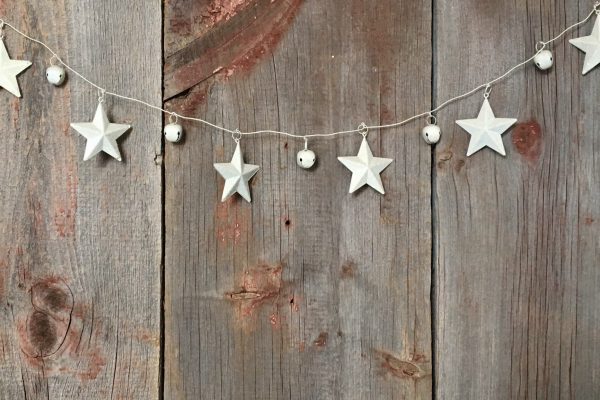
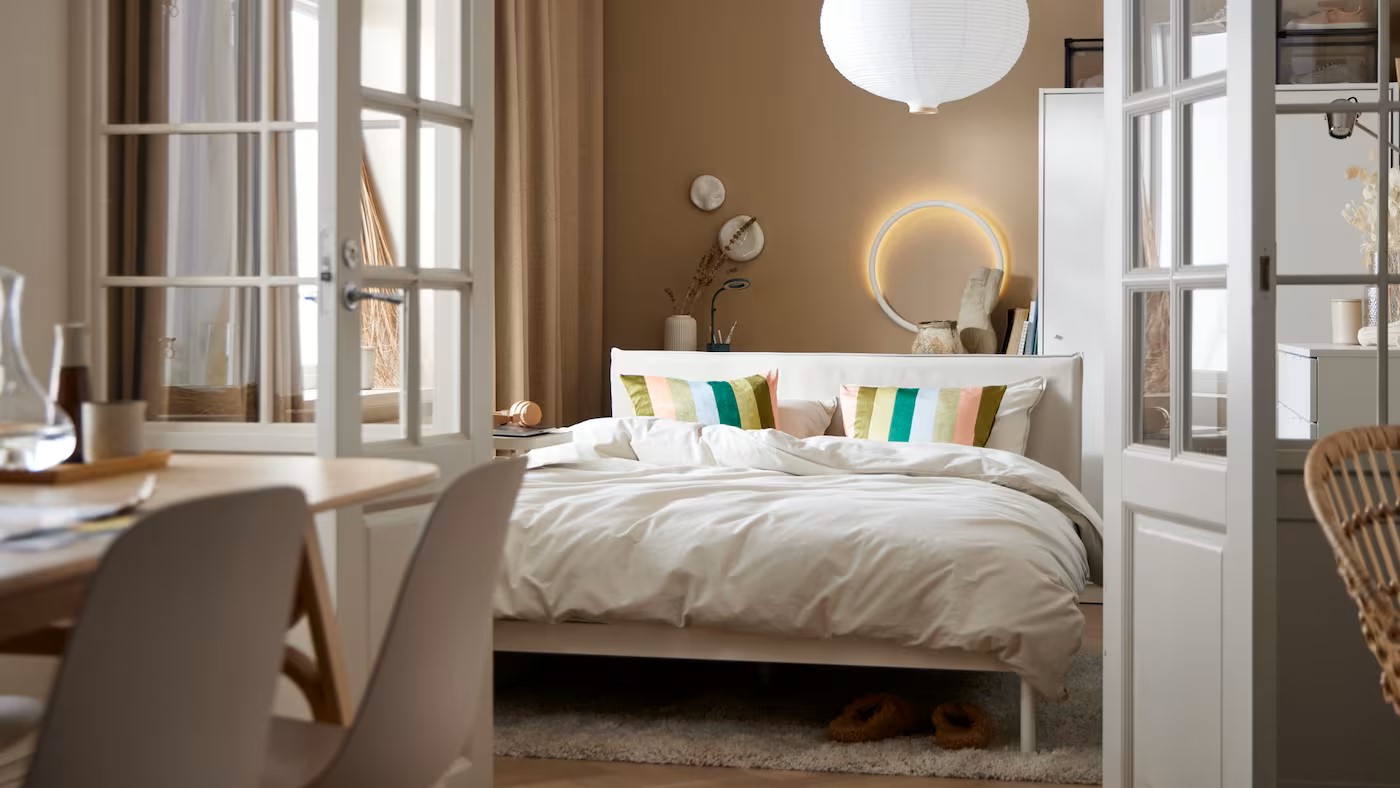
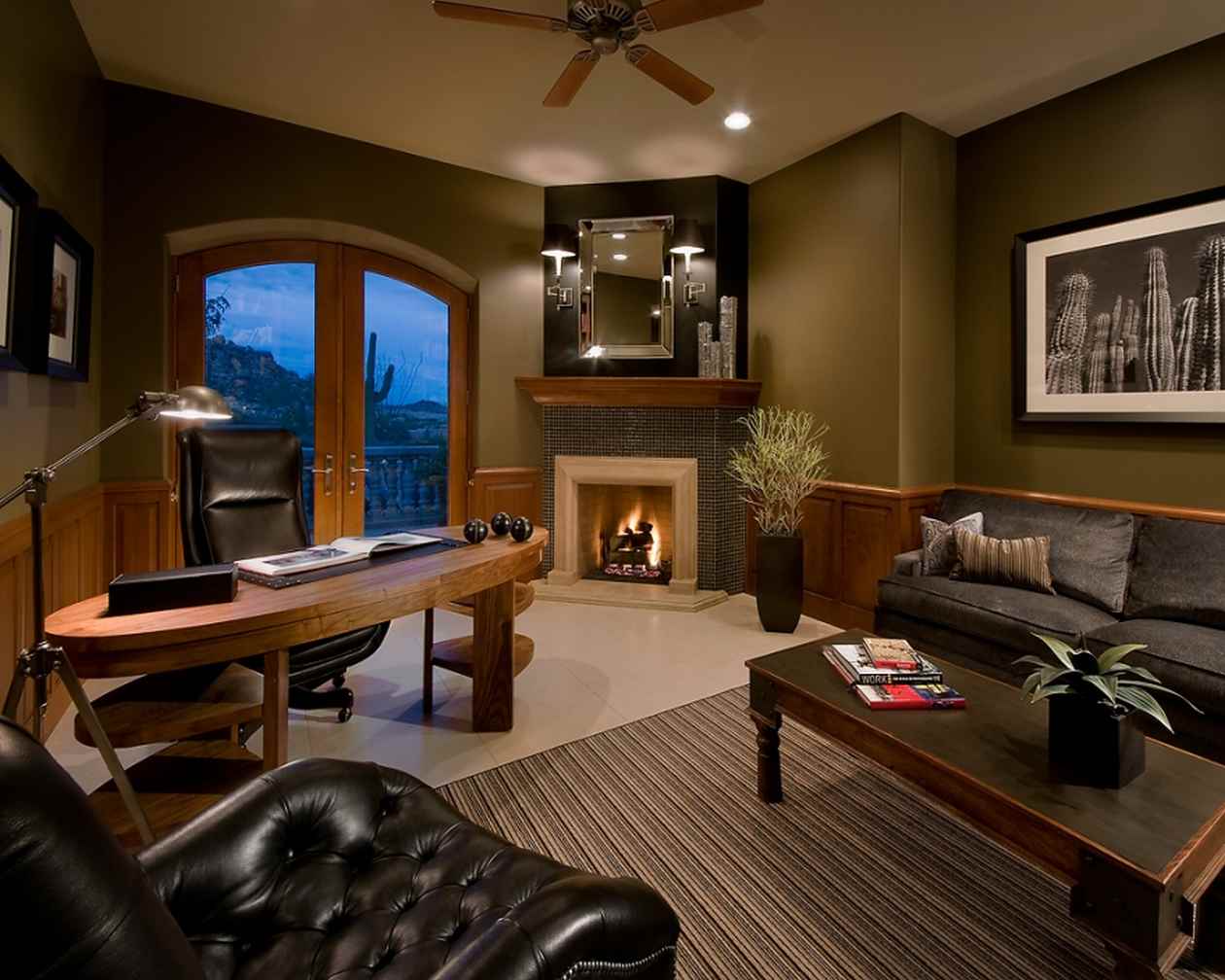
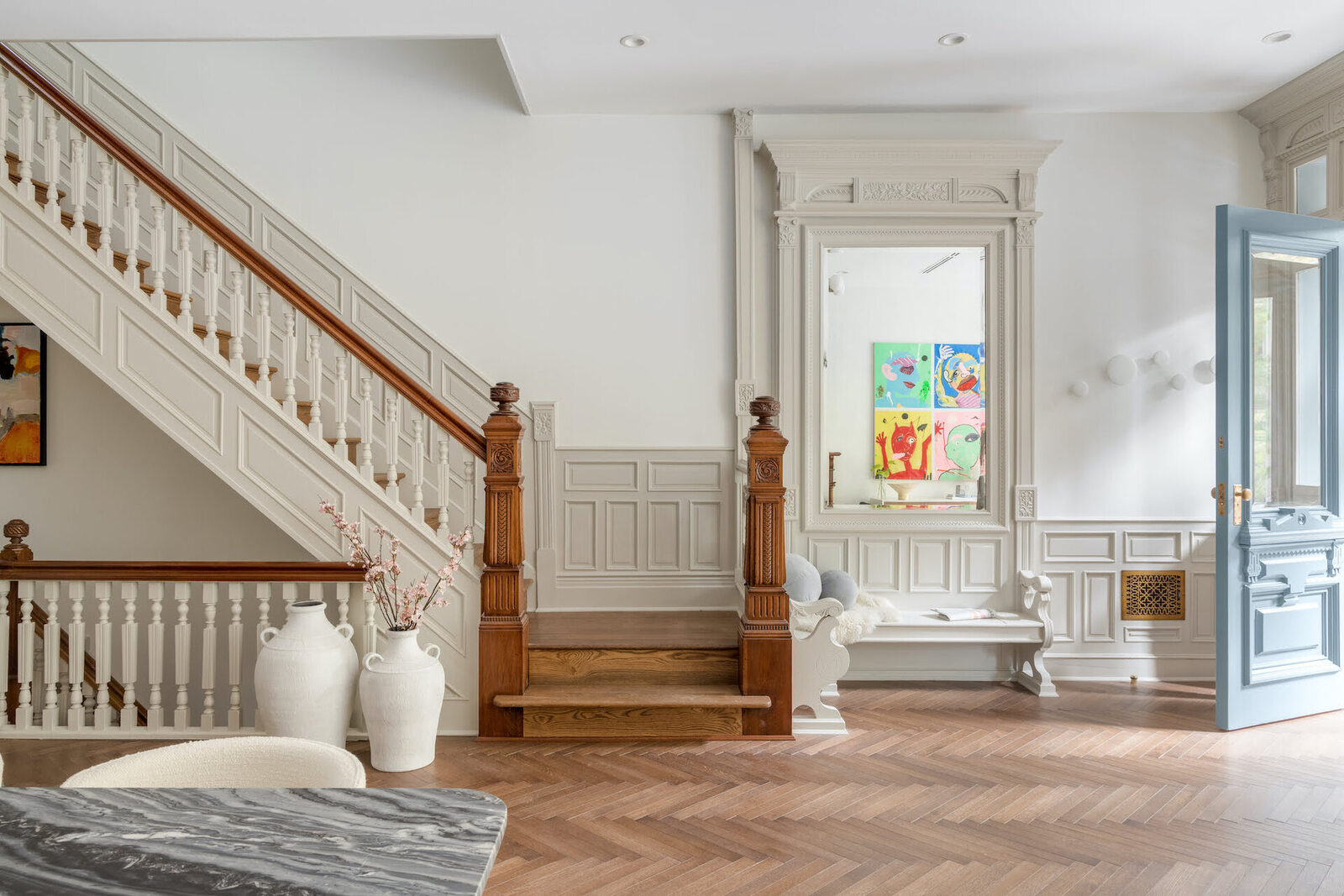
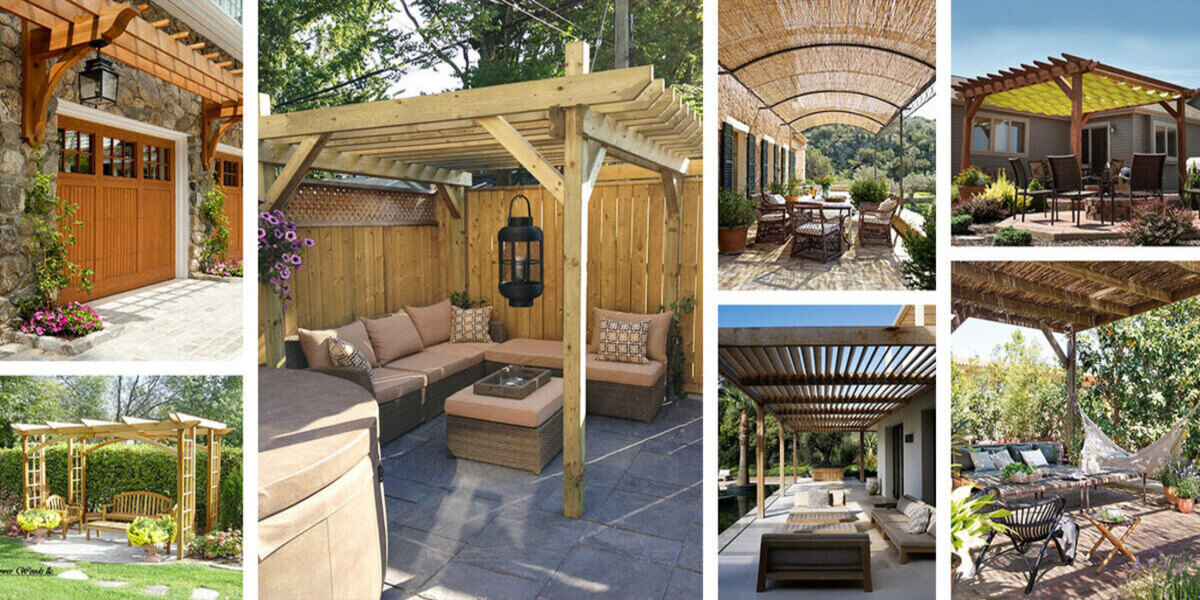
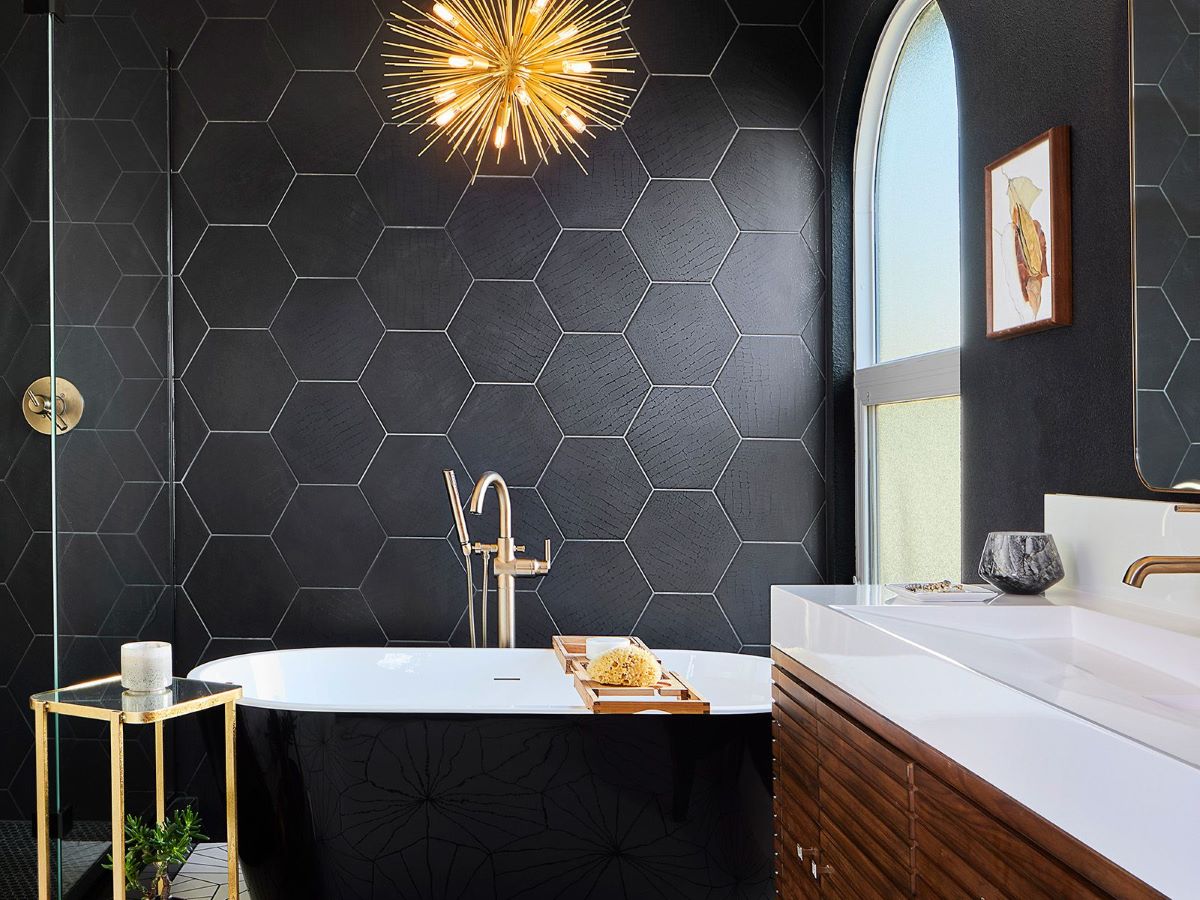
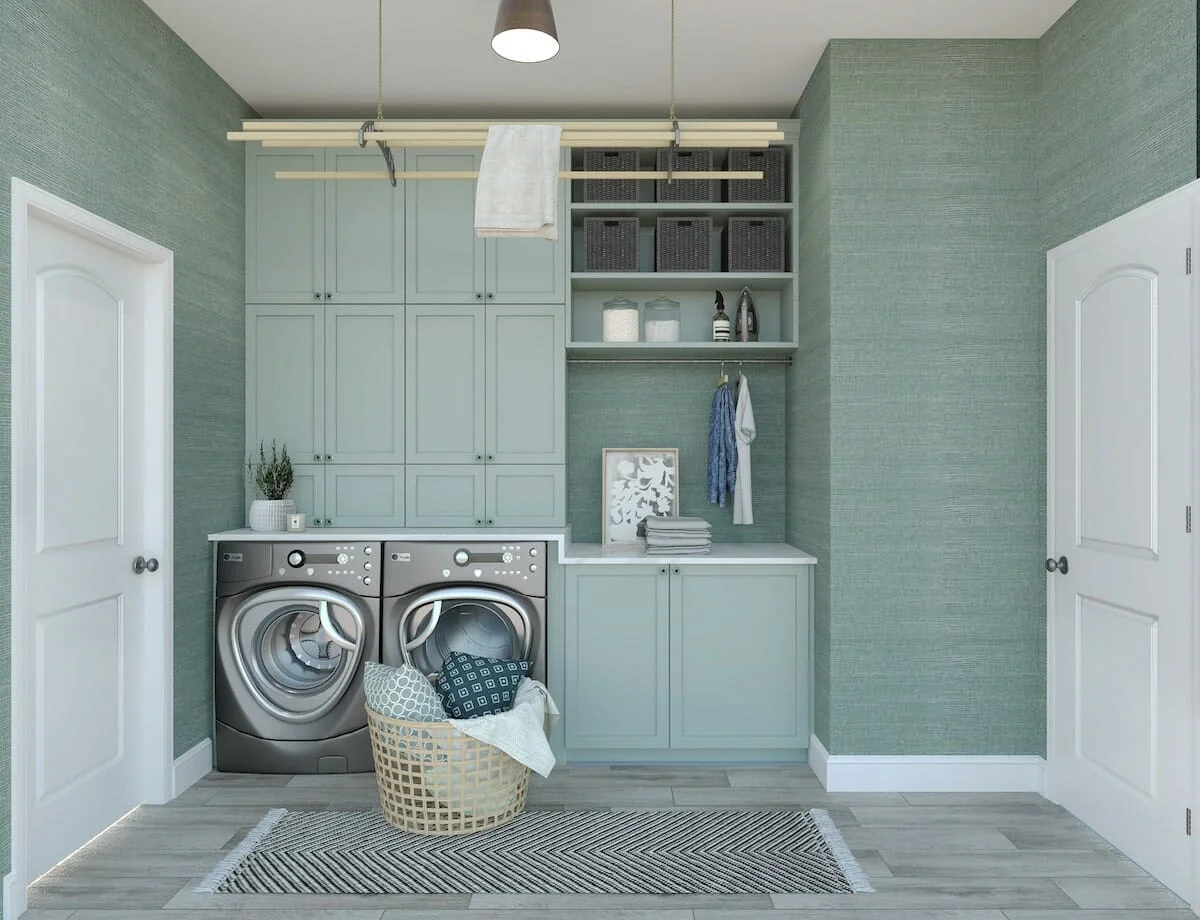

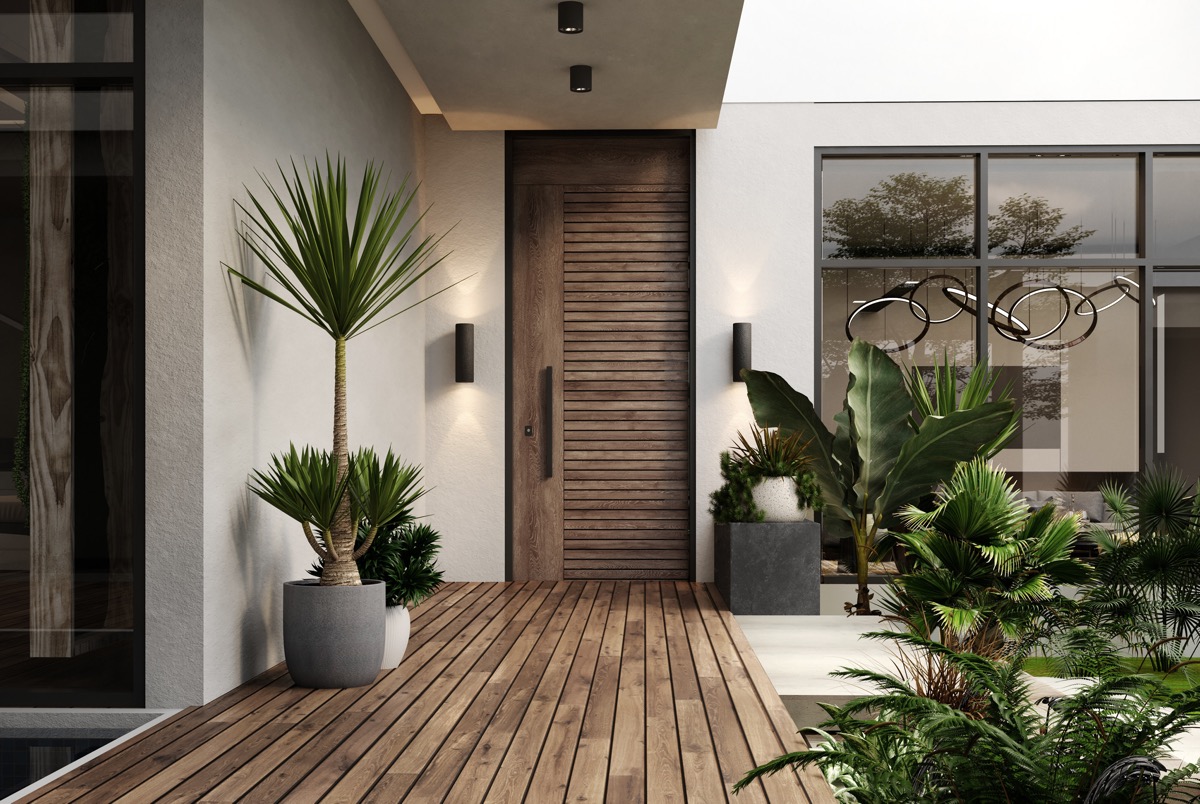
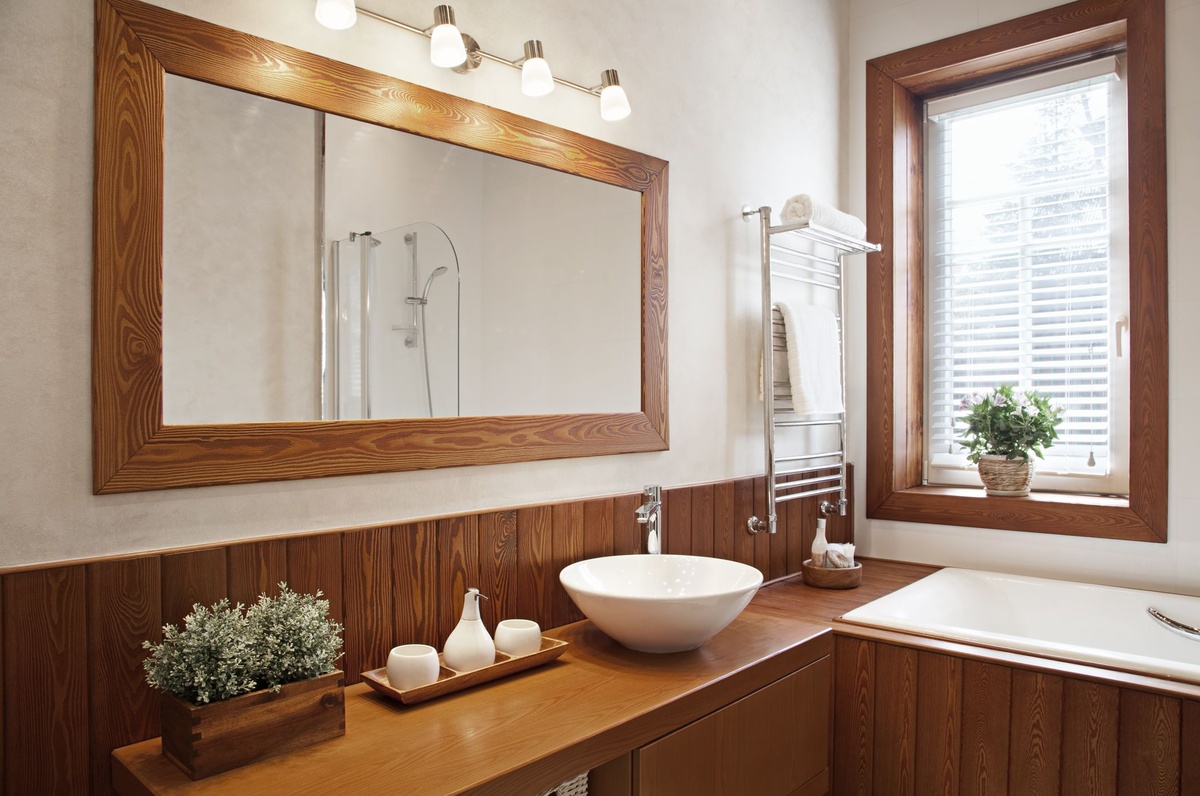

0 thoughts on “Kitchen Flooring Ideas: 22 Stylish, Practical Kitchen Floors”